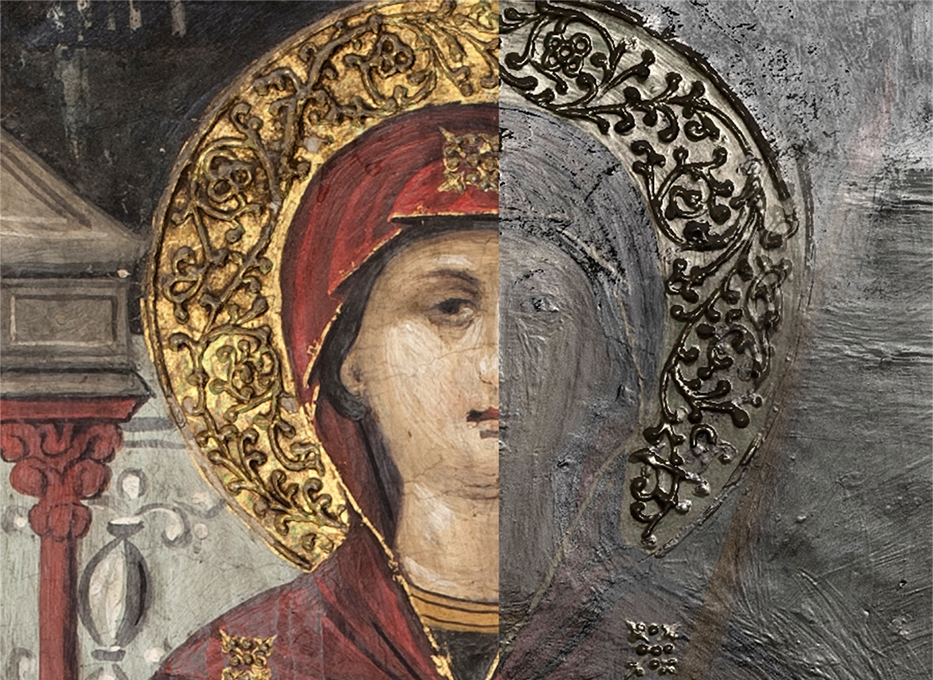Technology for Heritage Preservation and Management
Documenting and visualizing the past
Digital technologies have revolutionized the ways we document and thus preserve and protect works of art, archaeological objects, monuments and sites. Technical photography and 3D documentation and modeling offer endless possibilities that have enhanced the scope of archaeological, art historical and heritage research. In addition, scientific visualization has emerged as a powerful analytical tool for the study and dissemination of heritage assets, ranging from large-scale buildings and sites to objects from excavations bronze ceremonial tools from the Late Bronze Age site of Pyla-Kokkinokremos in Cyprus and works of art like mosaics, icons and frescoes like in the case of the UNESCO-listed church of St. John Lambadistis in Kalopanayiotis on the Troodos mountain range. Scientific visualization has also been used in the virtual restoration of heritage-at-risk, such as in the case of the looted and now repatriated frescoes of the Antiphonitis church, or in the example of the fragmented terracotta statues from ancient Salamis, now dispersed in museums and collections across the world. Additionally, the use of virtual immersive environments of buildings and sites like in the case of the UNESCO World Heritage site of Choirokitia and the Venetian Paphos gate in Nicosia provide instructive examples of the value and potential of visualization for the purposes of heritage management and cultural tourism. These immersive environments can help simulate the past and to provide users with the experience of virtually visiting sites, handling objects and in general engage with and respond to heritage in novel, unprecedented ways.
Equipped with state-of-the-art instrumentation, including a wide range of 3D data acquisition sensors (structured light, imaging and laser based), technical photography equipment and virtual environments software and hardware, the APAC Labs offer the necessary infrastructure for high accuracy 3D geometry measurements, shape analysis, surface characterization and 3D simulations and modeling, in order to elucidate a wide range of research questions, museology, conservation and restoration issues. Generated data are stored in a dedicated repository based on the FAIR (Findable, Accessible, Interoperable and Reusable) principles for scientific data management.


